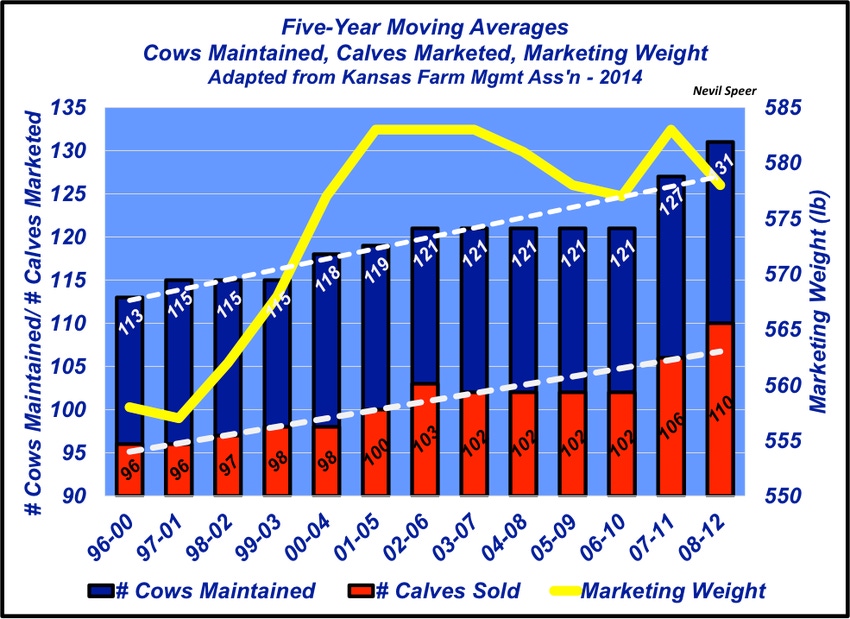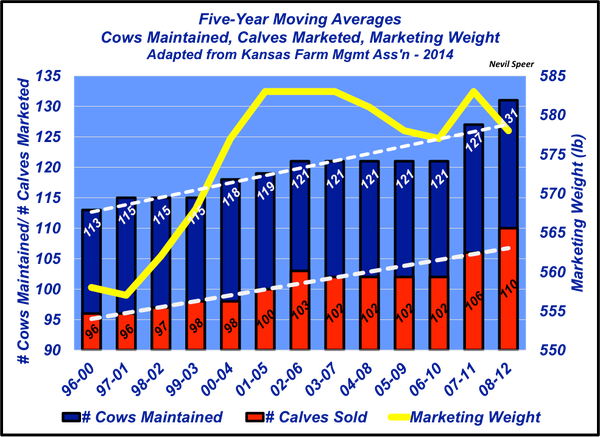Industry At A Glance: 18 years of Kansas data show herd size is increasing
Are the trends displayed by Kanas producers representative of the broader industry’s cow-calf sector?
December 18, 2014

Industry At A Glance previously reviewed cowherd trends among producers participating in the Kansas Farm Management Association (KFMA) back in early 2013. Given the ongoing focus upon rebuilding the cowherd, this serves as an appropriate time to review the trends with new data.
As background, Farm Management Association programs allow participants to obtain comprehensive analysis of the respective enterprises that comprise their farm operation. Most importantly, that information subsequently leads to establishing meaningful benchmarks for comparative purposes – from both a production and financial standpoint.
Meanwhile, Kansas’ program is one of the largest in the country. And, as such, it’s likely representative of many beef operations throughout the U.S. The data outlined represent five-year moving averages beginning with 1996-2000 and subsequently updated annually through 2008-2012. The five-year moving averages avoid year-over-year peaks and valleys (because of weather, markets, etc.) and help provide some focus on longer-run trends behind the decision-making process of beef producers.

The key components in the graph include number of cows maintained, number of calves marketed and marketing weight. The trends remain fairly consistent over time:
• Cowherd size continues to steadily increase (thereby indicating ongoing consolidation within the cow-calf sector);
•The relative proportion of calves marketed (marketing rate) has remained steady over time;
• Lastly, marketing weight of calves has seemingly plateaued during the past 10 years.
In summary, KFMA participants are carefully adding more cows and seemingly have found some balance of productivity (measured by marketing rate and weight) that fits their respective operations over time. The second half of the discussion for another column revolves around costs.
How do you perceive these trends? Are they representative of the broader industry and consistent with your perception of what’s happening in the cow-calf sector? Are they similar to what’s occurring within your operation? Do you perceive the direction of these trends changing in the near future? Leave your thoughts in the comments section below.
Nevil Speer serves as a private industry consultant. He is based in Bowling Green, KY, and can be reached at [email protected].
You might also like:
Gallery: Ranching is a family affair; meet the generations on the ranch
What's the best breeding weight for beef heifers?
Grass-fed vs grain-fed ground beef | Research shows no difference in healthfulness
Is this the year to over-winter cull cows?
Bale grazing lets cows feed themselves
About the Author(s)
You May Also Like




.png?width=300&auto=webp&quality=80&disable=upscale)
